
Midnight Oil are an Australian rock band composed of Peter Garrett, Rob Hirst (drums), Jim Moginie and Martin Rotsey (guitar). The group was formed in Sydney in 1972 by Hirst, Moginie and original bassist Andrew James as Farm: they enlisted Garrett the following year, changed their name in 1976, and hired Rotsey a year later. Peter Gifford served as bass player from 1980 to 1987, with Bones Hillman then assuming the role until his death in 2020. Midnight Oil have sold over 20 million albums worldwide as of 2021.
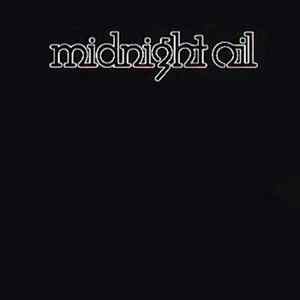
Midnight Oil is the debut album by Australian rock band Midnight Oil which was recorded in 1977 and released in November 1978 on the band's independent Powderworks label. It reached the top 50 on the Australian Kent Music Report Albums Chart. The album was later distributed by CBS Records and issued as a CD. The LP has a blue cover, however, the CD has a black cover. Because of the blue cover, the former version is often referred to, by fans, as the "blue album" or "the Blue Meanie". The lead single, "Run by Night", became the band's first minor hit in Australia and appeared on the Kent Music Report Singles Chart Top 100. It also had a video clip.

Head Injuries is the second studio album by Australian rock band Midnight Oil, released in October 1979 on their own Powderworks label and distributed by Columbia Records. The album was produced by Leszek J. Karski, recorded at 'Trafalgar Studios' in Sydney. It was the last Midnight Oil album to feature founding bass guitarist Andrew James, who quit the band due to illness. It peaked at No. 36 on the Australian Kent Music Report and by mid-1980 had achieved gold status in Australia.
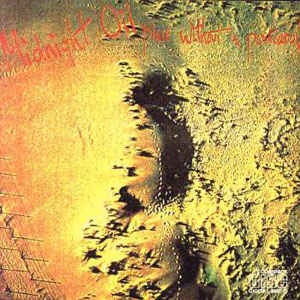
Place Without a Postcard is the third studio album by Australian rock band Midnight Oil, released in November 1981 under Sprint Music and the Columbia Records label. It peaked at No. 12 on the Kent Music Report albums chart and the related singles "Don't Wanna Be the One" and "Armistice Day" reached the associated Top 40 chart.
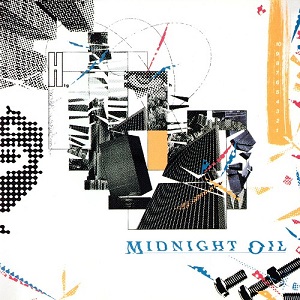
10, 9, 8, 7, 6, 5, 4, 3, 2, 1 is the fourth studio album by Midnight Oil that was released on vinyl in 1982 under the Columbia Records label. It peaked at No. 3 on the Australian Kent Music Report Albums Chart and remained on the chart for 171 weeks. It also became the band's first album to be released in the US, where it peaked at number 178 on the Billboard 200.
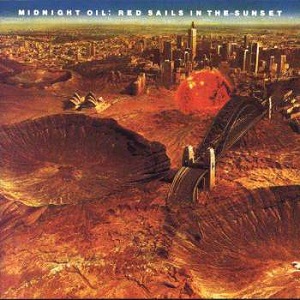
Red Sails in the Sunset is the fifth studio album by Australian group Midnight Oil which was released in October 1984 under the Columbia Records label. It was recorded and produced in Tokyo, Japan and is significant for becoming their first No. 1 album in Australia – it also entered the United States Billboard 200. The cover image, by Japanese artist Tsunehisa Kimura, depicts Sydney Harbour after a hypothetical nuclear strike. Some of its tracks were performed live in January 1985 at a Sydney Harbour Goat Island concert to celebrate radio station Triple J's 10th birthday, which was simulcast on ABC Television and subsequently re-broadcast on their then-Tuesday night music program Rock Arena. In 2004 the film footage later became part of a DVD album, Best of Both Worlds. Red Sails in the Sunset contains the only Midnight Oil tracks with lead vocals provided by their drummer Rob Hirst, "When the Generals Talk" and "Kosciusko". The album spawned two singles, "When the Generals Talk" and "Best of Both Worlds" but neither appeared on the Australian singles chart.

Blue Sky Mining is the seventh studio album by Australian alternative rock band Midnight Oil, released on 9 February 1990 under the Columbia Records label. It received high ratings from critics. In March of that year, the album peaked at number one on the ARIA Albums Chart for two weeks. A limited release of the record featured clear blue vinyl. This was the band's first studio album with bassist and backing vocalist Bones Hillman, who would remain in the group until his death in 2020.
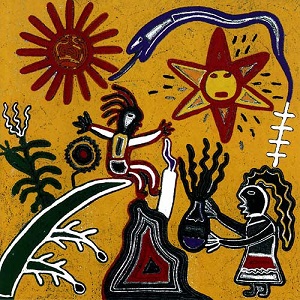
Earth and Sun and Moon is the eighth studio album by Australian rock group, Midnight Oil, that was released in April 1993 under the Columbia Records label. It peaked at No.2 on the ARIA Albums Chart.

Breathe is the ninth studio album by Australian rock band, Midnight Oil, which was released on 15 October 1996 under the Columbia Records label. It peaked at No. 3 on the ARIA Albums Chart and appeared in the top 40 on the New Zealand and Swiss Albums Charts. The album was produced by Malcolm Burn and according to Australian musicologist, Ian McFarlane, it had a loose, raw style with almost a low-key sound.

Bird Noises is the first extended play by Australian rock group, Midnight Oil, which was released on 24 November 1980 under the band's own independent label, Powderworks Records / Sprint Music. It was produced by Leszek Karski and manufactured and distributed by CBS/Columbia. Bird Noises reached the Top 30 on the Australian Kent Music Report Singles Chart.

James Moginie is an Australian musician. He is best known for his work with Midnight Oil, of which he is a founding member, guitarist, keyboardist and leading songwriter.
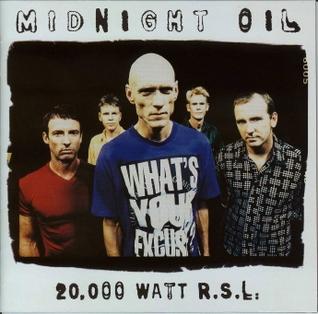
20,000 Watt R.S.L. is a compilation album by Australian rock band Midnight Oil released on 13 October 1997 on their own label Sprint Music. The word "Collection" appears on the front of the CD along the hinge in the same type face as the title and the name of the band and may have been intended as part of the album's title; however, it does not appear on the spine. The release has also been distributed inside a cardboard sleeve which adds "Midnight Oil: The Hits" to the album art, distinguishing it as a compilation album.

"Beds Are Burning" is a 1987 song by the Australian rock band Midnight Oil, the first track from their album Diesel and Dust. This song was released as the second single from the album. It reached No. 1 in New Zealand, South Africa and Canada, No. 3 in the Netherlands, No. 5 in France, No. 6 in the United Kingdom, Australia and Ireland, No. 17 in the United States and Sweden.

Capricornia is the eleventh studio album by Australian band Midnight Oil, released in February 2002 by Columbia Records in Australia and Liquid 8 Records in America.
The Second Australian Recording Industry Association Music Awards was held on 29 February 1988 at the Sheraton Wentworth Hotel in Sydney. Cliff Richard was the host, with Bryan Ferry, Feargal Sharkey and Ian "Molly" Meldrum included as presenters of the 21 awards. Other presenters were Rudi Grassner, Col Joye and Richard Wilkins. There were no live performances and the awards were not televised. A shouting match developed between manager Gary Morris, accepting awards for Midnight Oil, and former Countdown compere Meldrum who was presenting.
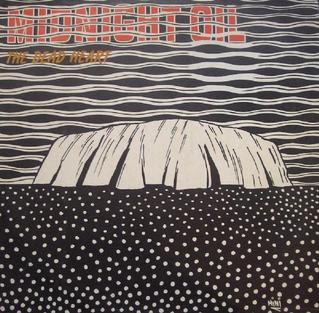
"The Dead Heart" is a song by Australian rock band Midnight Oil. It was first released as a single in Australia in 1986 and in the United Kingdom and the United States in 1988 after it had been included on the 1987 album, Diesel and Dust. It peaked at number four on the Australian singles chart and at number 11 on the U.S. Mainstream rock chart.

The discography of Australian rock group Midnight Oil consists of thirteen studio albums, forty-three singles, two EPs, five video albums, seven live albums, and six compilation albums. The band have sold over 20 million albums.

"Put Down That Weapon" is a song by Australian rock band Midnight Oil. The song was released in December 1987 as the third single from their sixth studio album, Diesel and Dust.

The Makarrata Project is the twelfth studio album by Australian band Midnight Oil, released on 30 October 2020 by Sony Music Australia. The album is the first new material from the band since 2002's Capricornia, their first studio album to hit #1 on the ARIA Charts since 1990's Blue Sky Mining, and one of the final releases to feature bassist and backing vocalist Bones Hillman before his death in November 2020.

Resist is the thirteenth studio album by Australian band Midnight Oil, released on 18 February 2022 by Sony Music Australia. The album will be supported by the band's final Australian and New Zealand tour, concluding in May 2022 with guitarist Jim Moginie saying "We've played intensely physical gigs since our humble beginnings back in 1977 and we never want to take even the slightest risk of compromising that." Despite this being the group's final tour, all members are still open to recording in the future.



















